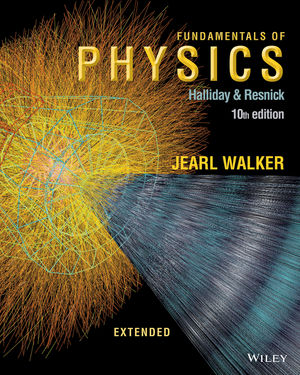Teaching
Fall 2023
- Quantum Mechanics I
- Textbook: You will decide in the first session!
The course covers Chapters -
Office hours: Mondays, 14:00 to 16:00 (or by appointment). My office address: 401@Physics Dept.
Tutor hours: TBA.
Evaluation Policy: TA (20%), Midterm exam (35%), Final exam (45%), +Bonous from projects
Assignments: (Problems from the textbook)
- Ch.
Projects: (Bonus = +2) (Submit your solutions into the LMS server.)
- .
- Advanced Solid State I
Spring 2023
- Quantum Mechanics II
- Textbook: Introduction to Quantum Mechanics, by David J. Griffiths
The course covers Chapters 5-11
Office hours: Mondays, 14:00 to 16:00 (or by appointment). My office address: 401@Physics Dept.
Evaluation Policy: TA (20%), Midterm exam (35%), Final exam (45%), +Bonous from projects
Assignments: (Problems from the textbook)
- Ch. 5: 16, 18
- Ch. 6: 2, 3, 5, 7, 9, 14, 16, 28, 30, 36(a,b)
- Ch. 7: 2, 4, 11, 15, 6,14
- Ch. 8: 1, 3, 14, 17
- Ch. 9: 1, 3, 7, 9, 11, 17, 18
- Ch. 10: 1, 3, 9
- Ch. 11: 1, 4
Midterm: marks, solutions
Final: marks, solutions
Total: marks
Projects: (Bonus = +2) (Submit your solutions into the LMS server.)
- Alpha Decay. Reproduce Fig. 8.6 of the textbook by plotting Eq. 8.28 (and 8.25). Tune manually or fit numerically the frequency of collision, v/2r1, for decaying from both U and Th. Include the plot, the computer code and the value of the frequency of collision in your report.
- Adiabatic Approx. Solve Problem 10.8 of the textbook, and report your solution as an essay.
- WKB Appprox. For a number of arbitrary potentials, find the allowed energies by solving numerically or graphically Eq. 8.16. For a few smallest energies, plot the corresponding wave functions. Include the computer code you wrote for this task in your report. (Hint: First, check your code for some potential with known exact solution.)
- Vector Potential. Explain in detail, citing to the literature, how magnetic field was introduced for the first time into the Schrodinger Equation.
- Numerov Method. Implement Numerov's method to solve numerically the Schrodinger Equation in one dimension for an arbitrary potential. First, compare the result of your code with the exact solution for some known potential (e.g. SHO). Report as short essay both your code and the obtained numerical and graphical results including the wave function of a few lowest states in energy.
Spring 2021 to Fall 2022
Taught via the SBU LMS service
Fall 2020
General Physics I
(Marks: Average=15.2, Std. Dev=1.9, Skewness=-1.1)
- Computational Physics (On-line course)
Spring 2020
با عنایت به عدم امکان برگزاری کلاسها به صورت حضوری تا اطلاع بعدی همه کلاسهای درس اینجانب هریک در همان زمان مقرر خود و به صورت آنلاین و با نرم افزار اداب کانکت برگزار می شود.
- فیزیک۲ - یکشنبه ها و سه شنبه ها ساعت ۹ تا ۱۰:۳۰ 1601096-02
- فیزیک۲- یکشنبه ها و سه شنبه ها ساعت ۱۰:۳۰ تا ۱۱ 1601096-01
- نظریه تابعی چگالی- شنبه ها و دوشنبه ها ساعت ۱۱ تا ۱۲:۳۰ 1612823
لطفا برای نصب نرم افزار و دریافت راهنماییهای لازم به صفحه زیر مراجعه فرمایید
سیستم برگزاری آنلاین کلاسهای دانشگاه شهید بهشتی
- General Physics II
Density Functional Theory and Applications
- Textbook: The 10th edition of Halliday's Fundamentals of Physics (Vol. 2)
The course covers Electricity and Magnetism as Chapters 21-33
Office hours: Sundays, 15:30 to 17:30 (or by appointment). My office address: 401@Physics Dept.
Evaluation Policy: TA (30%), Midterm exam (40%), Final exam (40%), +Bonous from projects
Midterm Date: 19 Farvardin 1399
- (Doctoral course)
Fall 2019

- General Physics I
- Textbook: The 10th edition of Halliday's Fundamentals of Physics
The course covers Mechanics as Chapters 1-12 (excluding 9.9, 11.3-11.9, 12.3)
Projects (Bonus = +2)
Detailed Grades
Spring 2019
- Electrodynamics II
- Computational Physics
- Density Functional Theory and Applications (Doctoral course)
Fall 2018
- Electrodynamics I
- Computational Physics
Spring 2018
Fall 2017
- Electrodynamics I
- Physics Texts
Spring 2017
- Condensed Matter Physics (Doctoral course)
- Analytical Mechanics II
Fall 2016
Spring 2016
- Advanced Electronic Structure of Solids (Doctoral course)
- Analytical Mechanics II
Fall 2015
- Analytical Mechanics I
- Solid State Physics II
- Special Topics (Master's and Doctoral course)
Spring 2015
- Computational Physics
- Computational Condensed Matter Physics (Doctoral course)
Presentaions in schools/workshops
- Localness Meets Machine Learning Approximating Ground- and Excited States Energies (Computational Physics Conference, 1398) Slides
- Modeling and Fabrication of Nanostructures Made of 2D Materials: Slides 1, 2, 3 , Links for hands-on: 1, 2, 3
Atomic Descriptors For Machine Learning Applications. Materials: slides, hands-on session, molecule trajectory, video- Quantifying Distances between Atomic Configurations
- DFTB method: bridging the DFT-TB gap
- Charge analysis
Tutorials